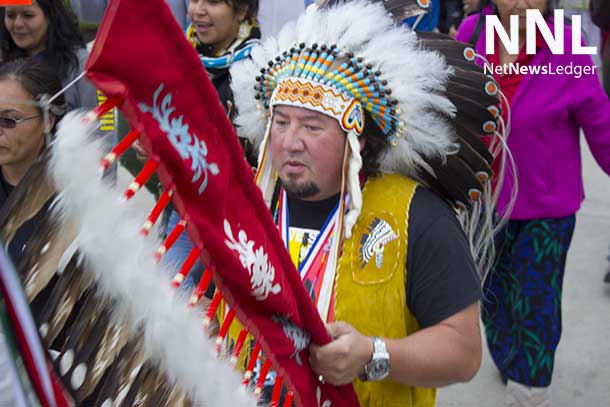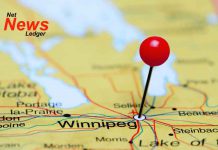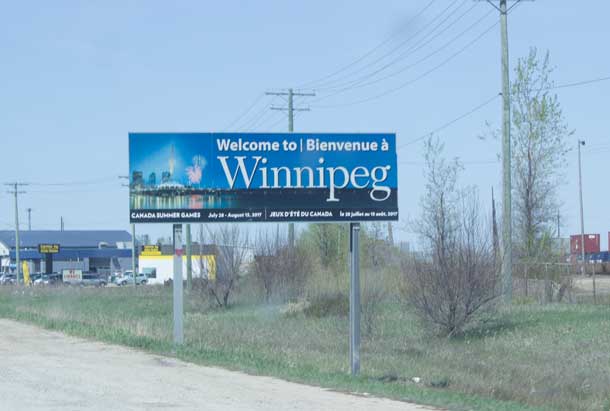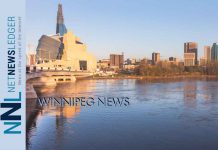Indigenous Leader Derek Nepinak partners with the Canadian Museum of Human Rights
WINNIPEG, MAN – Bringing some reality to the existence of the hardship of indigenous people of Canada and around the world in comparison of the life of Nelson Mandela’s experience of 27 years that he was forced to prison life, the Canadian Museum for Human Rights built a replica of Nelson Mandela’s cell in Winnipeg Manitoba. This is the full testimony of Indigenous Leader, Derek Nepinak’s before and after his fast.
“My name is Derek Nepinak (Niibin Makwa) and I am Anishinaabe. Today I am beginning a 27-hour fast of no food and no water inside the Nelson Mandela replica jail cell at the Canadian Museum for Human Rights on Treaty 1 territory in Winnipeg, Manitoba, Canada. The 27 hours represents 1 hour for each year Mandela was in prison because of his resistance to the oppression of colonialism. My intent here today is to draw recognition to the fact that while it is important to celebrate victories over colonialism and human rights abuses, Indigenous peoples still face an ongoing reality of colonialism and genocide right here in the nation-state of Canada.
Lesson fron Nelson Mandela’s Life
Derek Nepinak says, “Nelson Mandela’s life taught us that even while contained within the most oppressive and violent of racialized colonial state mechanisms, love and freedom of spirit can persevere. Mandela’s example should continue to not only bring lessons in resistance, but it should also bring hope to us as Indigenous peoples living our colonization here in the nation-state of Canada. The message here is that we too can persevere and find ways to build our freedom from the confines of a colonial nation-state that denies the existence of our self-determination.
“The Mandela exhibit at the Canadian Human Rights Museum is one of the most well-defined examples in the world of the force of colonial rule on Indigenous peoples and provides us with an opportunity to identify the parallels between South African apartheid, and our own experiences of segregation and marginalization in Canada. Walking through the Mandela exhibit you see the parallels between apartheid in South Africa and our own experiences within colonial policy and law here in Canada.
“For example South African colonial authorities created separate identification for Black South Africans whom they referred to as “natives.” Black South Africans had to carry passbooks and had to produce these books on demand by colonial authorities. This was done to control the movement of Indigenous people and to keep people confined to reserves. This is very similar to the pass system that our families lived within the late 1800s through to the mid-1900s and also parallels today’s “status Indian” card that many Indigenous people carry today here in Canada.
“In South Africa, S. 2 of the Bantu Education Act of 1953 states: The state has total control over black people’s education. Black and white education systems are separate, and blacks will receive only minimal education. In Canada, our people were also undergoing a separate and apart education system that was violent and designed to assimilate or destroy us and our culture.
“There are many more parallels I could raise but my intent here is to identify the consistency in the application of colonialism across the British empire. There is an onus on us as Indigenous peoples to not only continue to wake up to our colonial reality but to work to overcome it by re-building our institutions of governance, our social and kinship systems, our economies and our physical and mental well-being. This does not mean building ourselves into the political and legal systems of the colonizing state or co-drafting their legislation. Rather, it means acknowledging efforts to re-invigorate our laws from the traditions and ancient laws that are still there for us to learn and implement. There are Indigenous people doing this important work all across turtle island and we have to validate their work, instead of funnelling critical issues into Ottawa-sponsored committee tables intent on taking possession of our solutions.
“This Canadian Human Rights museum is built at the intersection of what we now call the Red and Assiniboine rivers. It is built at a location where we as Indigenous people converged for trade and commerce and diplomacy for thousands of years prior to the arrival of our European brothers and sisters. These lands are settled by Treaty agreements that were signed by the ancestors of today’s Indigenous community. In our treaty negotiations, we agreed to allow for immigration and we consented and welcomed immigrants from all parts of the world who were fleeing political oppression, famine and now today, the effects of climate change. As Indigenous peoples, despite the oppression we have faced in colonization, we still welcome people from all over the world today.
“I want our brothers and sisters and all of our relations from the south who have walked their way north from their homelands to know that we love you and we respect you and you are welcome to come to the ancestral lands of our people here north of the medicine line. This is a place where the union of the Eagle and Condor can be strengthened and we welcome you. Migrations of humans will continue to accelerate as global warming displaces people from their homelands, forcing us to build a new nation of humanity that will hopefully be less focused on artificial borders and more focused on a peaceful co-existence.
“Migwetch. Thank you.”






